Opinion & Analysis
Wishon: How to choose the right club head
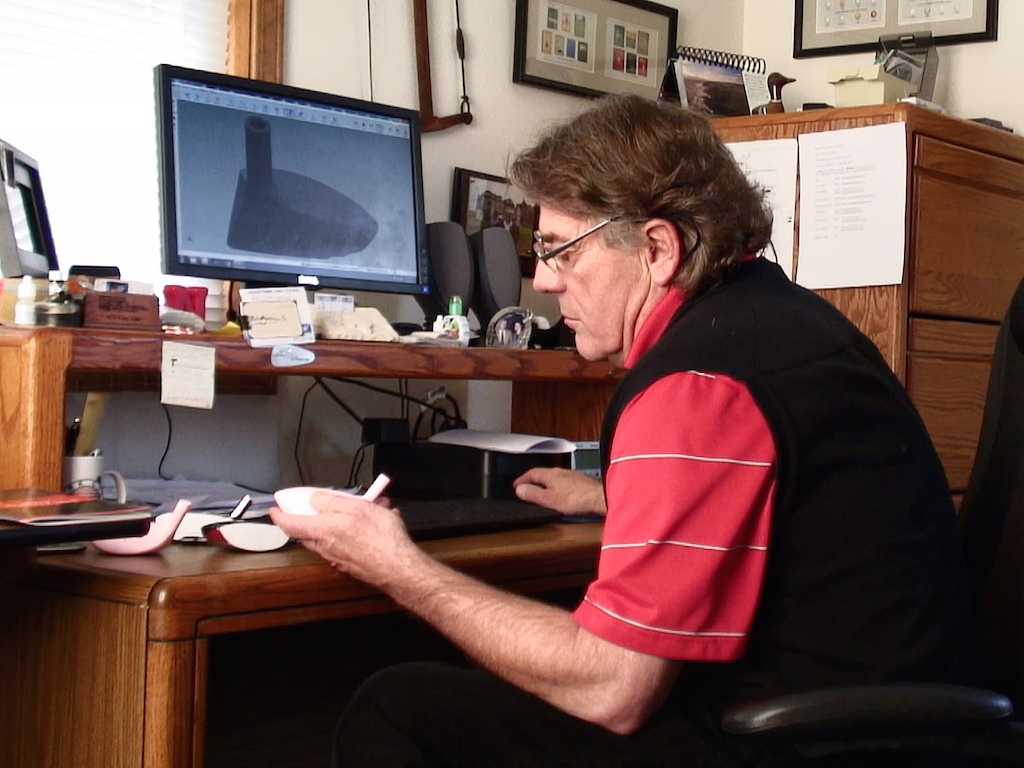
Most golfers have to like the way their clubs look at address, so the psychological side of club head selection is very important. If golfers don’t like the way their new clubs look, the success of the overall fitting can be in jeopardy — regardless of how much improvement there is.
That’s why it’s important to fit golfers into club heads that have the potential to improve their performance (misdirection tendency, overall launch conditions/trajectory, etc.), but also keep the shape and style of the club heads a priority.
Clubhead shape/style elements to identify and match to the golfer’s preference typically involve height and blade length of the head, sole width, topline width, topline slope, leading edge radii, offset/face progression, sole radius/bounce/design, back design, and so on.
But while most of these aspects of the “look” of the head may be judged on an esoteric or qualitative manner, there are most definitely performance-based elements of the head design that have to be a very important part of the fitting of the clubhead. As such, there always has to be a balance in the clubfitter’s recommendation and the golfer’s acceptance of the head model.
That’s why when we teach clubhead model fitting, we begin the process by stressing the following guideline to clubfitters:
- Within all of the clubhead models that satisfy the golfer’s personal preferences for shape features, style, finish and cosmetics, recommend the ones that have the highest MOI and the best off-center hit performance.
- If the golfer also needs the utmost in distance and forgiveness for his ability and game-improvement goals, expand your recommendation to include the ones with the best face design for highest COR and best variable thickness construction.
When it comes to the pure performance side of clubhead fitting, the more experienced clubfitters will also keep these points in mind:
- For golfers with a definite need to reduce a slice or hook, recommend driver, wood and hybrid models that are available in different face angle options or those can be adjusted or bent to achieve the correct face angle to reduce the misdirection tendency.
Center of Gravity (CG) changes — either higher/lower or closer/further back from the face to achieve trajectory, shot shape, spin and shot height fitting goals — certainly can be attempted in the head recommendation. The effect of such CG changes may not bring about as much shot shape improvement as hoped, however, because they are so much affected by individual golfer characteristics of clubhead speed, consistency of the delivery of the head to impact and swing error tendencies.
In other words, don’t expect too much change in shot shape from a CG difference in a clubhead unless you are a more accomplished player with a higher-than-average clubhead speed and a proper impact position.
This does not mean that the clubfitter should ignore the benefits of a lower or more rearward-located CG for golfers with slower swings speed or those who need help keeping the ball in the air. Just don’t expect a big change in doing so.
While the final decision for the clubhead is always in the hands of the golfer, clubfitters should do their best to diplomatically explain the tangible benefits for using a clubhead model with a higher level of game improvement features than the golfer may think they need. Golf is a tough game to begin with and using a clubhead that cannot reduce the negative effects of swing errors is not the wisest decision if the goal is to play to the best of your ability.
What matters, what doesn’t
It usually takes BIG differences in head design technology to bring about small-to-medium differences in shot performance.
- A COR difference of 0.030 or more is significant for distance increase. A difference of 0.010 is not.
- An MOI difference of more than 1000 g-cm2 is significant for improvement on off-center hits. A difference of 600 g-cm2 or less is not.
- A vertical CG difference of more than 5 millimeters is significant for shot height and spin differences. One less than that is not for the vast majority of golfers.
- A face-to-back difference in CG of more than 8 millimeters can be significant for shot height and spin differences, but only for golfers with later-to-very-late releases. A face-to-back difference in CG of 5 millimeters or less is insignificant even for later release players.
- The more radius on the iron sole from face to back, the better the sole design is for EVERY golfer to very slightly help reduce the degree of “fatness” of a slightly fat shot. More face-to-back sole radius is also good for more consistent sole-to-turf interaction with Bermuda-type turf as well as for shots hit from the rough.
Related
- What length should your clubs be?
- What lofts should your clubs be?
- Face angle is crucial for a proper fitting
- The best way to fit lie angle
- How to choose the right club head design
- Tom Wishon’s keys to set makeup
- Getting the right size grip, time after time
- What shaft weight should you play?
- What swing weight should your clubs be?
- What shaft flex should I use?
This story is part of a 10-part series from Tom Wishon on professional club fitting.
- LIKE122
- LEGIT15
- WOW8
- LOL5
- IDHT1
- FLOP10
- OB1
- SHANK8
Opinion & Analysis
The Wedge Guy: What really makes a wedge work? Part 1

Of all the clubs in our bags, wedges are almost always the simplest in construction and, therefore, the easiest to analyze what might make one work differently from another if you know what to look for.
Wedges are a lot less mysterious than drivers, of course, as the major brands are working with a lot of “pixie dust” inside these modern marvels. That’s carrying over more to irons now, with so many new models featuring internal multi-material technologies, and almost all of them having a “badge” or insert in the back to allow more complex graphics while hiding the actual distribution of mass.
But when it comes to wedges, most on the market today are still single pieces of molded steel, either cast or forged into that shape. So, if you look closely at where the mass is distributed, it’s pretty clear how that wedge is going to perform.
To start, because of their wider soles, the majority of the mass of almost any wedge is along the bottom third of the clubhead. So, the best wedge shots are always those hit between the 2nd and 5th grooves so that more mass is directly behind that impact. Elite tour professionals practice incessantly to learn to do that consistently, wearing out a spot about the size of a penny right there. If impact moves higher than that, the face is dramatically thinner, so smash factor is compromised significantly, which reduces the overall distance the ball will fly.
Every one of us, tour players included, knows that maddening shot that we feel a bit high on the face and it doesn’t go anywhere, it’s not your fault.
If your wedges show a wear pattern the size of a silver dollar, and centered above the 3rd or 4th groove, you are not getting anywhere near the same performance from shot to shot. Robot testing proves impact even two to three grooves higher in the face can cause distance loss of up to 35 to 55 feet with modern ‘tour design’ wedges.
In addition, as impact moves above the center of mass, the golf club principle of gear effect causes the ball to fly higher with less spin. Think of modern drivers for a minute. The “holy grail” of driving is high launch and low spin, and the driver engineers are pulling out all stops to get the mass as low in the clubhead as possible to optimize this combination.
Where is all the mass in your wedges? Low. So, disregarding the higher lofts, wedges “want” to launch the ball high with low spin – exactly the opposite of what good wedge play requires penetrating ball flight with high spin.
While almost all major brand wedges have begun putting a tiny bit more thickness in the top portion of the clubhead, conventional and modern ‘tour design’ wedges perform pretty much like they always have. Elite players learn to hit those crisp, spinny penetrating wedge shots by spending lots of practice time learning to consistently make contact low in the face.
So, what about grooves and face texture?
Grooves on any club can only do so much, and no one has any material advantage here. The USGA tightly defines what we manufacturers can do with grooves and face texture, and modern manufacturing techniques allow all of us to push those limits ever closer. And we all do. End of story.
Then there’s the topic of bounce and grinds, the most complex and confusing part of the wedge formula. Many top brands offer a complex array of sole configurations, all of them admittedly specialized to a particular kind of lie or turf conditions, and/or a particular divot pattern.
But if you don’t play the same turf all the time, and make the same size divot on every swing, how would you ever figure this out?
The only way is to take any wedge you are considering and play it a few rounds, hitting all the shots you face and observing the results. There’s simply no other way.
So, hopefully this will inspire a lively conversation in our comments section, and I’ll chime in to answer any questions you might have.
And next week, I’ll dive into the rest of the wedge formula. Yes, shafts, grips and specifications are essential, too.
- LIKE13
- LEGIT4
- WOW1
- LOL1
- IDHT2
- FLOP2
- OB1
- SHANK1
Golf's Perfect Imperfections
Golf’s Perfect Imperfections: Amazing Session with Performance Coach Savannah Meyer-Clement

In this week’s episode, we spent some time with performance coach Savannah Meyer-Clement who provides many useful insights that you’ll be able to implement on the golf course.
- LIKE0
- LEGIT0
- WOW0
- LOL0
- IDHT0
- FLOP0
- OB0
- SHANK0
19th Hole
Vincenzi’s 2024 RBC Heritage betting preview: Patrick Cantlay ready to get back inside winner’s circle

Just a two-hour drive from Augusta National, the PGA TOUR heads to Harbour Town Golf Links in Hilton Head Island, S.C. Hilton Head Island is a golfer’s paradise and Harbour Town is one of the most beautiful and scenic courses on the PGA TOUR.
Harbour Town Golf Links is a par-71 that measures 7,121 yards and features Bermuda grass greens. A Pete Dye design, the course is heavily tree lined and features small greens and many dog legs, protecting it from “bomb-and-gauge” type golfers.
The field is loaded this week with 69 golfers with no cut. Last year was quite possibly the best field in RBC Heritage history and the event this week is yet another designated event, meaning there is a $20 million prize pool.
Most of the big names on the PGA Tour will be in attendance this week with the exceptions of Hideki Matsuyama and Viktor Hovland. Additionally, Webb Simpson, Shane Lowry, Gary Woodland and Kevin Kisner have been granted sponsors exemptions.
Past Winners at Harbour Town
- 2023: Matt Fitzpatrick (-17)
- 2022: Jordan Spieth (-13)
- 2021: Stewart Cink (-19)
- 2020: Webb Simpson (-22)
- 2019: CT Pan (-12)
- 2018: Sotoshi Kodaira (-12)
- 2017: Wesley Bryan (-13)
- 2016: Branden Grace (-9)
- 2015: Jim Furyk (-18)
In this article and going forward, I’ll be using the Rabbit Hole by Betsperts Golf data engine to develop my custom model. If you want to build your own model or check out all of the detailed stats, you can sign up using promo code: MATTVIN for 25% off any subscription package (yearly is best value).
Key Stats For Harbour Town
Let’s take a look at key metrics for Harbour Town Golf Links to determine which golfers boast top marks in each category over their past 24 rounds.
Strokes Gained: Approach
Strokes Gained: Approach is exceedingly important this week. The greens at Harbour Town are about half the size of PGA TOUR average and feature the second-smallest greens on the tour. Typical of a Pete Dye design, golfers will pay the price for missed greens.
Total SG: Approach Over Past 24 Rounds
- Scottie Scheffler (+1.27)
- Tom Hoge (+1.27)
- Corey Conners (+1.16)
- Austin Eckroat (+0.95)
- Cameron Young (+0.93)
Good Drive %
The fairways at Harbour Town are tree lined and feature many dog legs. Bombers tend to struggle at the course because it forces layups and doesn’t allow long drivers to overpower it. Accuracy is far more important than power.
Good Drive % Over Past 24 Rounds
- Brice Garnett (88.8%)
- Shane Lowry (+87.2%)
- Akshay Bhatia (+86.0%)
- Si Woo Kim (+85.8%)
- Sepp Straka (+85.1%)
Strokes Gained: Total at Pete Dye Designs
Pete Dye specialists tend to play very well at Harbour Town. Si Woo Kim, Matt Kuchar, Jim Furyk and Webb Simpson are all Pete Dye specialists who have had great success here. It is likely we see some more specialists near the top of the leaderboard this week.
SG: TOT Pete Dye per round over past 36 rounds:
- Xander Schauffele (+2.27)
- Scottie Scheffler (+2.24)
- Ludvig Aberg (+2.11)
- Brian Harman (+1.89)
- Sungjae Im (+1.58)
4. Strokes Gained: Short Game (Bermuda)
Strokes Gained: Short Game factors in both around the green and putting. With many green-side bunkers and tricky green complexes, both statistics will be important. Past winners — such as Jim Furyk, Wes Bryan and Webb Simpson — highlight how crucial the short game skill set is around Harbour Town.
SG: SG Over Past 24 Rounds
- Jordan Spieth (+1.11)
- Taylor Moore (+1.02)
- Wyndham Clark (+0.98)
- Mackenzie Hughes (+0.86)
- Andrew Putnam (+0.83)
5. Greens in Regulation %
The recipe for success at Harbour Town Golf Links is hitting fairways and greens. Missing either will prove to be consequential — golfers must be in total control of the ball to win.
Greens in Regulation % over past 24 rounds:
- Brice Garnett (+75.0%)
- Scottie Scheffler (+69.9%)
- Corey Conners (+69.0%)
- Shane Lowry (+68.3%)
- Patrick Rodgers (+67.6%)
6. Course History
Harbour Town is a course where players who have strong past results at the course always tend to pop up.
Course History over past 24 rounds:
- Patrick Cantlay (+2.34)
- Cam Davis (+2.05)
- J.T. Poston (+1.69)
- Justin Rose (+1.68)
- Tommy Fleetwood (+1.59)
The RBC Heritage Model Rankings
Below, I’ve compiled overall model rankings using a combination of the five key statistical categories previously discussed — SG: Approach (24%), Good Drives (20%), SG: SG (14%), SG: Pete Dye (14%), GIR (14%), and Course History (14%)
- Shane Lowry
- Russell Henley
- Scottie Scheffler
- Xander Schauffele
- Corey Conners
- Wyndham Clark
- Christiaan Bezuidenhout
- Matt Fitzpatrick
- Cameron Young
- Ludvig Aberg
2024 RBC Heritage Picks
Patrick Cantlay +2000 (FanDuel)
With the exception of Scottie Scheffler, the PGA Tour has yet to have any of their star players show peak form during the 2024 season. Last week, Patrick Cantlay, who I believe is a top-5 players on the PGA Tour, took one step closer to regaining the form that’s helped him win eight events on Tour since 2017.
Cantlay limped into the Masters in poor form, but figured it out at Augusta National, finishing in a tie for 20th and ranking 17th for the week in Strokes Gained: Ball Striking. The former FedEx Cup champion will now head to one of his favorite golf courses in Harbour Town, where he’s had immaculate results over the years. In his six trips to the course, he’s only finished worse than 7th one time. The other finishes include three third places (2017, 2019, 2023) and one runner-up finish (2022). In his past 36 rounds at Harbour Town, Cantlay ranks 1st in Strokes Gained: Total per round at the course by a wide margin (+2.36).
Cantlay is winless since the 2022 BMW Championship, which is far too long for a player of his caliber. With signs pointing to the 32-year-old returning to form, a “signature event” at Harbour Town is just what he needs to get back on the winning track.
Tommy Fleetwood +3000 (FanDuel)
I truly believe Tommy Fleetwood will figure out a way to win on American soil in 2024. It’s certainly been a bugaboo for him throughout his career, but he is simply too talented to go another season without winning a PGA Tour event.
At last week’s Masters Tournament, Fleetwood made a Sunday charge and ended up finishing T3 in the event, which was his best ever finish at The Masters. For the week, the Englishman ranked 8th in the field in Strokes Gained: Approach, 10th in Strokes Gained: Ball Striking and 16th in Strokes Gained: Putting.
Harbour Town is a perfect layout for Fleetwood, and he’s had relative success at this Pete Dye design in the past. In his four trips to the course, he’s finished inside of the top 25 three times, with his best finish, T10, coming in 2022. The course is pretty short and can’t be overpowered, which gives an advantage to more accurate players such as Fleetwood. Tommy ranks 8th in the field in Good Drive % and should be able to plot his way along this golf course.
The win is coming for Tommy lad. I believe there’s a chance this treasure of a golf course may be the perfect one for him to finally break through on Tour.
Cameron Young +3300 (FanDuel)
Cameron Young had a solid Masters Tournament last week, which is exactly what I’m looking for in players who I anticipate playing well this week at the RBC Heritage. He finished in a tie for 9th, but never felt the pressure of contending in the event. For the week, Young ranked 6th in Strokes Gained: Off the Tee and 6th in Strokes Gained: Ball Striking.
Despite being one of the longest players off the tee on the PGA Tour, Young has actually played some really good golf on shorter tracks. He finished T3 at Harbour Town in 2023 and ranks 20th in the field in Good Drive% and 16th in Greens in Regulation in his past 24 rounds. He also has strong finishes at other shorter courses that can take driver out of a players hand such as Copperhead and PGA National.
Young is simply one of the best players on the PGA Tour in 2024, and I strongly believe has what it takes to win a PGA Tour event in the very near future.
Corey Conners +5500 (FanDuel)
Corey Conners has had a disappointing year thus far on the PGA Tour, but absolutely loves Harbour Town.
At last week’s Masters Tournament, the Canadian finished T30 but ranked 20th in the field in Strokes Gained: Approach. In his past 24 rounds, Conners ranks 3rd in the field in Strokes Gained: Approach, 3rd in Greens in Regulation % and 24th in Good Drive %.
In Conners’ last four trips to Harbour Town, his worst finish was T31, last season. He finished T4 in 2021, T12 in 2022 and ranks 8th in Strokes Gained: Total at the course over his past 36 rounds.
Conners hasn’t been contending, but his recent finishes have been encouraging as he has finished in the top-25 in each of his past three starts prior to The Masters, including an impressive T13 at The PLAYERS. His recent improvement in ball striking as well as his suitability for Harbour Town makes Conners a high upside bet this week.
Shane Lowry (+7500) (FanDuel)
When these odds were posted after Lowry was announced in the field, I have to admit I was pretty stunned. Despite not offering much win equity on the PGA Tour over the last handful of years, Shane Lowry is still a top caliber player who has the ability to rise to the top of a signature event.
Lowry struggled to score at The Masters last week, but he actually hit the ball really well. The Irishman ranked 1st for Strokes Gained: Approach on the week and 7th in Strokes Gained: Ball Striking. As usual, it was the putter that let him down, as he ranked 60th in the field in Strokes Gained: Putting.
Harbour Town is most definitely one of Lowry’s favorite courses on the PGA Tour. In his six starts there, he’s finished in the top 10 three times, including third twice. Lowry is sensational at Pete Dye designs and ranks 7th in Strokes Gained: Total in his past 36 rounds on Dye tracks.
Lowry is perfect for Harbour Town. In his past 24 rounds, he ranks 5th in Strokes Gained: Approach, 2nd in Good Drive% and 5th in Green in Regulation %. If he figures it out on the greens, Shane could have his first win in America since 2015.
Lucas Glover +12000 (FanDuel)
This is one of my weekly “bet the number” plays as I strongly believe the odds are just too long for a player of Glover’s caliber. The odds have been too long on Glover for a few weeks now, but this is the first event that I can get behind the veteran being able to actually contend at.
Glover is quietly playing good golf and returning to the form he had after the understandable regression after his two massive victories at the end of 2023. He finished T20 at The Masters, which was his best ever finish at Augusta National. For the week, Lucas ranked 18th for Strokes Gained: Approach and 20th in Strokes Gained: Ball Striking.
Over his past 24 rounds, Glover ranks 9th in Strokes Gained: Approach and 13th in Good Drive %. Harbour Town is a short course that the 44-year-old will be able to keep up with the top players on Tour off the tee. He’s played the course more than 20 times, with mixed results. His best finishes at Harbour Town include a T7 in 2008, but recently has a finish of T21 in 2020.
Glover has proven he can contend with the stars of the Tour on any given week, and this number is flat out disrespectful.
- LIKE30
- LEGIT5
- WOW2
- LOL1
- IDHT1
- FLOP2
- OB0
- SHANK2
-

 19th Hole1 week ago
19th Hole1 week agoDave Portnoy places monstrous outright bet for the 2024 Masters
-

 19th Hole3 weeks ago
19th Hole3 weeks agoThings got heated at the Houston Open between Tony Finau and Alejandro Tosti. Here’s why
-

 19th Hole1 week ago
19th Hole1 week agoTiger Woods arrives at 2024 Masters equipped with a putter that may surprise you
-

 19th Hole2 weeks ago
19th Hole2 weeks agoReport: Tiger Woods has ‘eliminated sex’ in preparation for the 2024 Masters
-

 19th Hole4 days ago
19th Hole4 days agoTwo star names reportedly blanked Jon Rahm all week at the Masters
-

 19th Hole4 days ago
19th Hole4 days agoNeal Shipley presser ends in awkward fashion after reporter claims Tiger handed him note on 8th fairway
-

 19th Hole3 days ago
19th Hole3 days agoReport: LIV Golf identifies latest star name they hope to sign to breakaway tour
-

 19th Hole2 weeks ago
19th Hole2 weeks agoAddiction, spinal fusion, and scam artists – Everything Anthony Kim revealed in candid interview with David Feherty

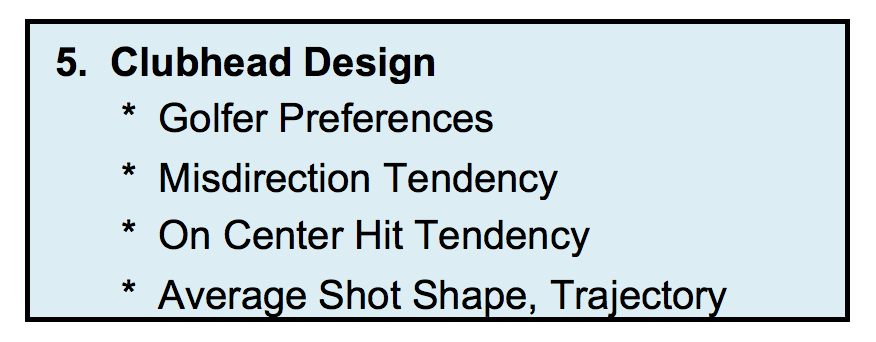
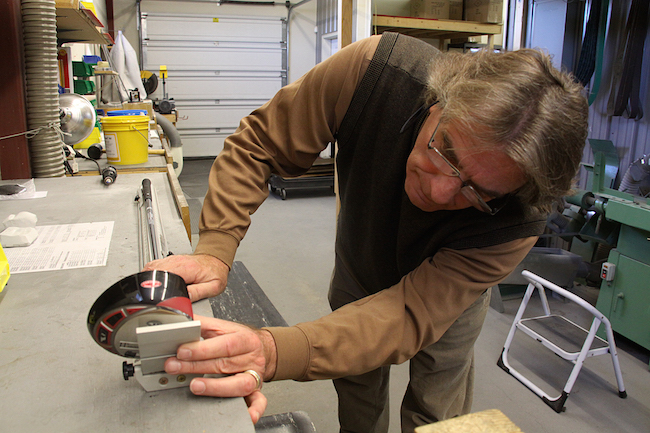


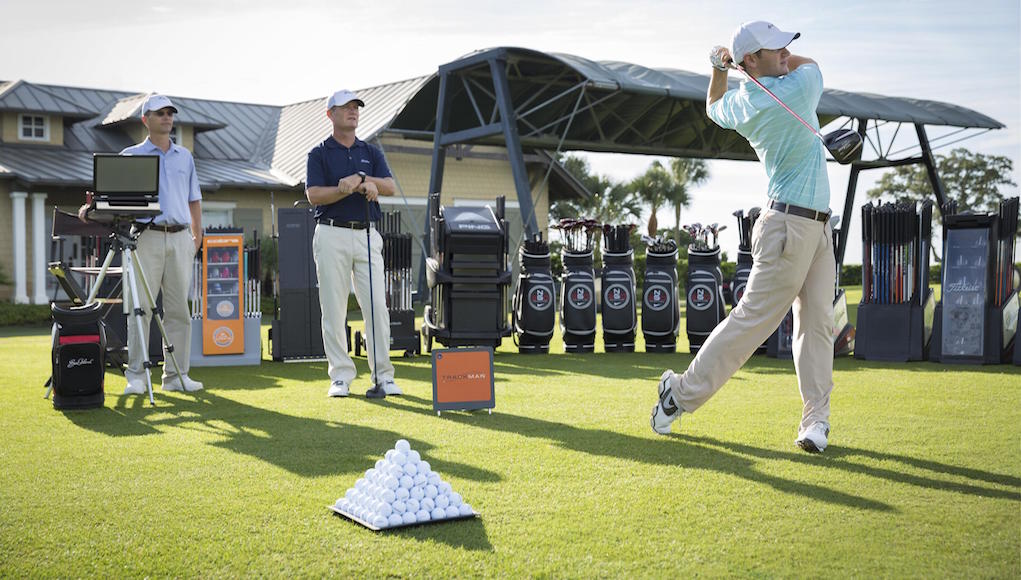
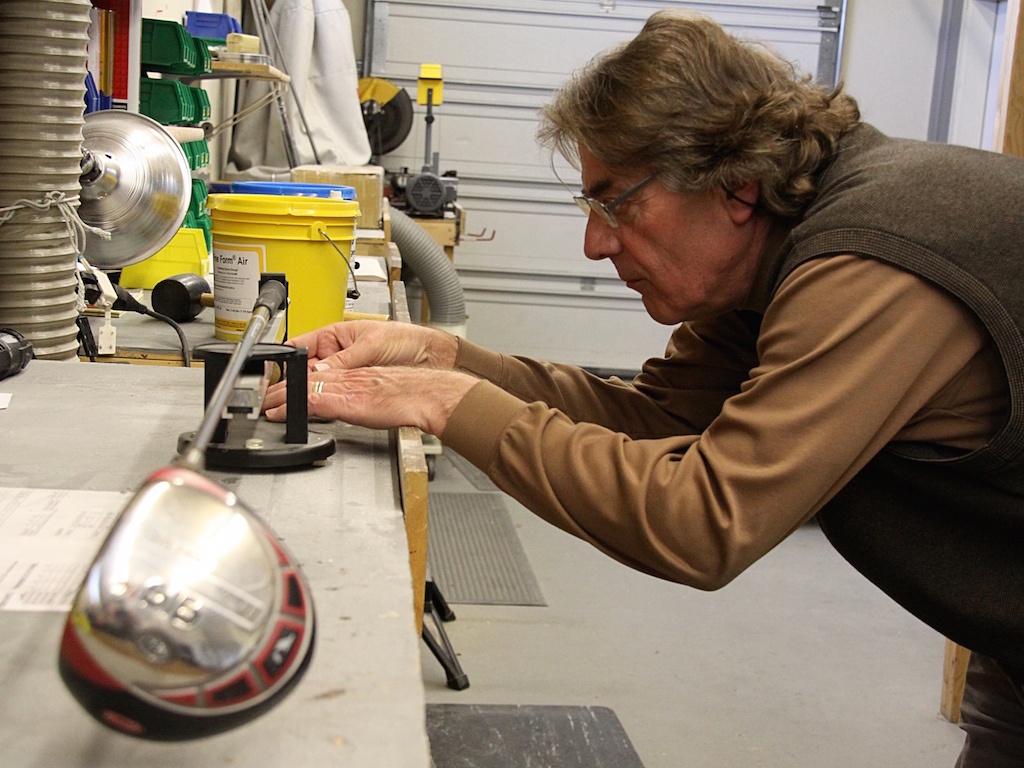

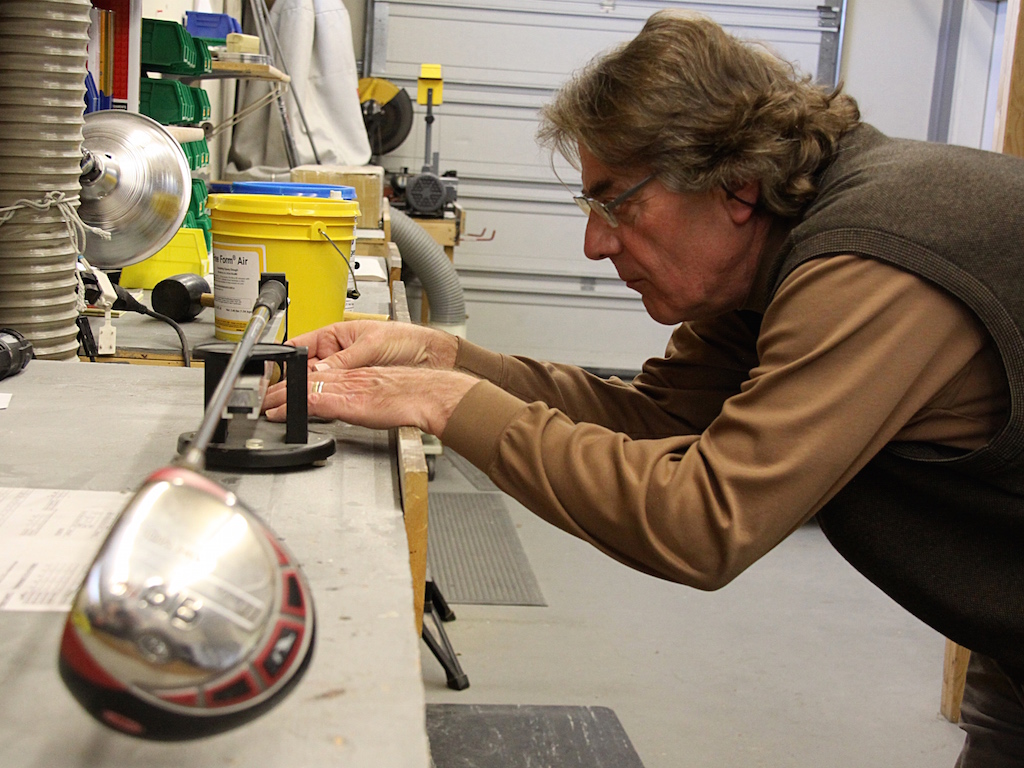
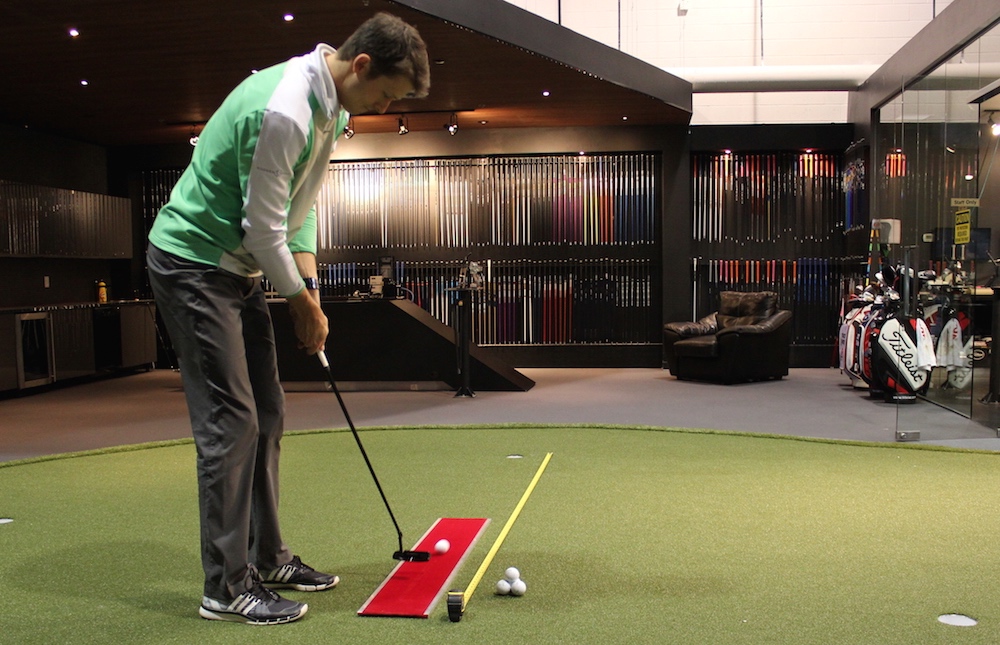
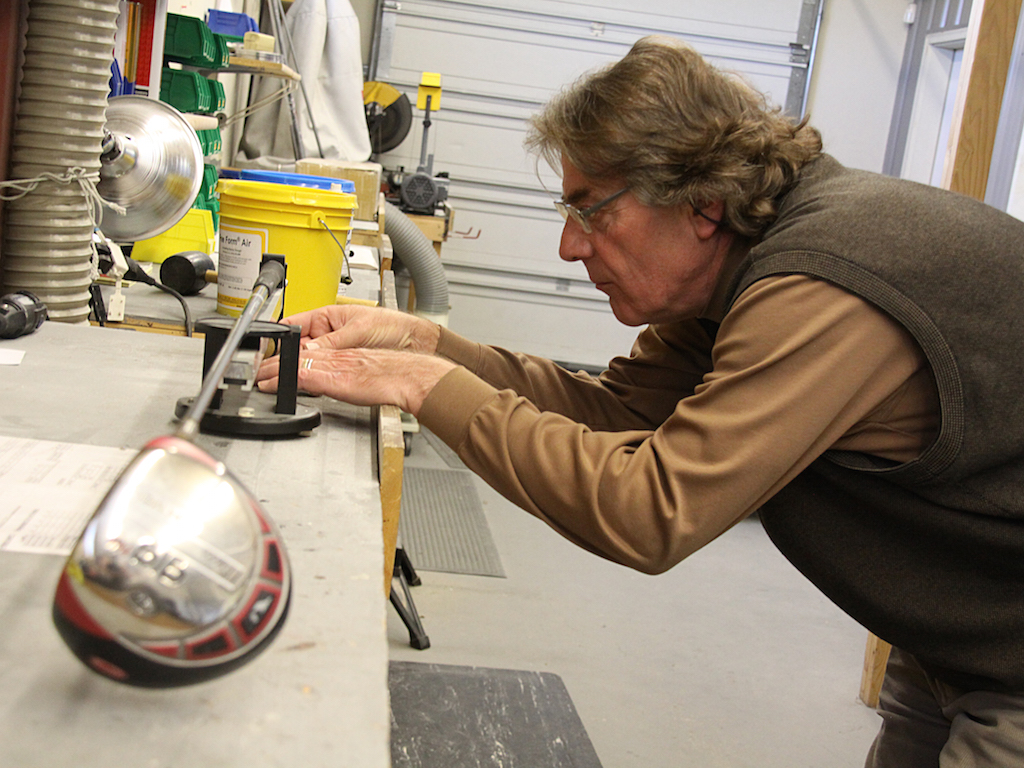













dime bag
Feb 4, 2015 at 8:43 pm
When my 4 year gets crabby we put him in a special chair called the “pouty place”. Does Keith need to sit in the “pouty place” for a while until he can act like a big guy?
Keith
Feb 4, 2015 at 9:11 pm
Yes, I think I do…but I just had a Snickers bar so I think I am better now.
JOEL GOODMAN
Feb 4, 2015 at 8:32 pm
why the negativity from these guys? If you don’t like it , go away. Tom Wishon has forgotten more about golf clubs than 99% of people will ever learn. He is pure genius and is worth listening to and reading his views. WRX is a superb vehicle for information not available through the “how to cure your slice”media. I love it and think Tom Wishon is terrific. Disclosure-I have purchased and built clubs using Wishon components and am using one of his drivers. I also play Mizuno MP68 irons, and wedges. I live in south Florida, age 79 index 7.7 and play 5 days every week, 52 weeks a year–JEALOUS?????
chris
Feb 4, 2015 at 8:56 pm
I could agree more, being new to this site I have found Tom’s articles to be the most informative that I have read here. Keep up the good work Tom.
Keith
Feb 4, 2015 at 9:13 pm
Yes, I am jealous…and…Yes, I agree Mr. Wishon is a genius and makes a great product.
Benny
Feb 4, 2015 at 7:12 pm
Awesome stuff Tom, makes complete sense. I have a couple friends of mine who bought Wishon that were properly fitted and while very high handicappers their games have really improved and feel it’s from proper fitting. Most amateur golfers are very steep in their swings. They stand very up right and close to the ball so the angle is steep and adding the radius helps them. Add this to your adjustable hozels on your woods/drivers and you really have the best fitted clubs money can buy. Never mind priced way below most manufactures. You just cannot beat it and I am extremely excited to be getting my woods from one of your builders this spring.
Please keep this info coming because even the negative talk on here is helping get your points across. Thanks Tom, thanks WRX!
Bob
Feb 4, 2015 at 12:22 pm
Is he saying the wider the sole the better it is for all players.
Shallowface
Feb 4, 2015 at 3:50 pm
You can certainly have face to back radius or camber in a narrow sole, so I don’t think Tom was saying that the sole has to be wide.
Tom Wishon
Feb 4, 2015 at 5:41 pm
shallowface
Not sole width – I was talking about the sole radius in the direction from front to back across the sole being good for all players. Add a rounding of the leading edge from sole around to face and that is better for everyone too. Such sole designs stand up better for those with more downward angle of attack into the ball, and they can help slightly for shots from the rough because the greater front to back sole radius offers less surface contact to the grass for a little less chance of the sole hanging up in the rough.
myron miller
Feb 4, 2015 at 12:08 pm
Tom, I notice you don’t talk about CT time for any of the clubs, especially the driver as being important. Is it because you don’t feel its a factor or what?
I’m asking because at least one driver manufacturer tries to emphasis its higher CT time as being critical to improving distance. Personally I don’t see how CT time on the face makes that much difference especially considering all the differences in golf ball hardness.
Tom Wishon
Feb 4, 2015 at 6:01 pm
Myron
In the article I did say this. . .
Within all of the clubhead models that satisfy the golfer’s personal preferences for shape features, style, finish and cosmetics, recommend the ones that have the highest MOI and the best off-center hit performance.
If the golfer also needs the utmost in distance and forgiveness for his ability and game-improvement goals, expand your recommendation to include the ones with the best face design for highest COR and best variable thickness construction.
Thus the comment about highest COR as a part of a clubhead recommendation for a golfer who needs/wants the utmost in distance. CT/COR is a non issue with drivers and has been for a long time because virtually every titanium driver made since the late 90s has been maximized for COR to be as close to the limit as the company’s production of the head will allow under normal +/- tolerances. Of course if the golfer wants to eek out the absolute most in driver COR, he can hit several models and look for the one that records a smash factor of 1.49-1.50 which is the max possible for an 0.830 COR/257 CT face measurement.
CT is just a different form of test to enable the USGA to assess the ability of the face to flex inward at impact more quickly than it takes to run an actual air cannon COR test. With driver heads, CT is correlatable to an actual COR test measurement. It is not in irons. So the reason CT is pertinent to distance is because the more you get the face to flex at impact without deforming, the less energy is lost in the collision between the face and the ball. That right there is the basic science behind COR. From this comes the higher ball speed in relation to the clubhead speed – aka smash factor. So if you have a driver with a CT of say, 260 and one at 240, without question the ball speed in relation to clubhead speed for the 260CT will be higher than the one at 240, and from this will come more distance if the loft and everything else is fit correctly to the golfer.
Let me explain how this works with respect to different ball compression types and ball construction. With a low COR head, in the collision between the face and the ball, 80% of the energy loss from the impact comes from the compression of the ball against the face. Squash the ball more, you lose more energy. 20% comes from the face flexing inward only a tiny bit as a low COR head. If you allow the face to flex inward more, what you do is you greatly reduce the amount that the ball squashes against the face. So the ball’s energy loss is much less than the increase in energy loss from the face flexing inward a little more.
To grasp this, realize that the face of an 0.830 COR driver flexes inward just short of 1/16″ at impact. The face of a low COR (0.780) driver flexes inward a little less than 1/32″. So just for an additional 1/32″ of face flexing, the energy transfer is much greater due to a lot less squashing of the ball so the ball speed can increase quite a bit in relation to the clubhead speed.
With a soft ball like a Noodle, with a low COR head, that ball at 100mph clubhead speed will squash around 30% of its diameter. Change to a high COR head and that same ball now squashes around 20% of its diameter, thus reducing the energy loss and increasing the energy transfer to the shot to get more ball speed. With a hard solid ball, with a low COR head, that ball at 100mph clubhead speed will squash around 20% of its diameter. Change to a high COR head and that same ball now squashes around 12% of its diameter, thus reducing the energy loss and increasing the energy transfer to the shot to get more ball speed.
So the high COR face design works to increase ball speed and distance no matter what the ball construction.
chris
Feb 4, 2015 at 8:33 pm
That was a very informative reply for those of us who don’t have a strong grasp of what happens to the and the club face at impact.
Keith
Feb 4, 2015 at 11:38 am
I am slightly confused by these articles…are these just long advertorials as a point of differentiation from other manufacturers? It seems like a conflict of interest to have a manufacturer of golf clubs writing articles for your site without slugging this as an advertisement…especially if you drive to his site at the bottom of the page.
You may not be explicitly selling his product, by you are advertising his process and have alluded to others not being as thorough in previous articles. Being part of the Conde Nast family you would think your editors would know this is not okay….but alas you will probably delete this comment and continue as usual.
Zak Kozuchowski
Feb 4, 2015 at 11:46 am
Keith,
First off, GolfWRX is independently owned and operated — not part of the Conde Nast family or affiliated with Conde Nast in any way.
Secondly, this is not an advertisement. Tom Wishon is a GolfWRX Contributor and part of our Featured Writers program. We’re working with him on this series because we think he can help our readers better understand club fitting and their club fitting needs. He does not pay us to publish this stories.
Last, we only delete comments that are wildly off topic, use inappropriate language or personally attack or authors. If you’ve had a comment deleted, that’s why.
– Zak Kozuchowski
GolfWRX Managing Editor
Shallowface
Feb 4, 2015 at 12:05 pm
I consider myself to be highly sensitive to the things Keith mentions, and I consider Tom’s articles to be just fine. Anything that helps us be more educated consumers is most welcome, and from a lot of what I read here is sorely needed.
Looking forward to the rest of the series!
Keith
Feb 4, 2015 at 3:18 pm
I appreciate the response, but respectfully disagree with what you have said here. This is absolutely an advertisement and your readers should know that. You are driving to his company site in which his whole sales pitch is custom fitting. I find it hard to believe that site traffic and conversion (lead) is not being tracked on wishongolf.com from GolfWrx.com.
I don’t have an issue with the article and agree it may be helpful…but it is without a doubt advertising.
Also, does your partnership with Golf Digest for content production and distribution not count as being affiliated with Conde Nast? Perhaps we are forgetting about this comment
“Joining forces with an established and authoritative brand such as the Golf Digest Properties will resonate with the passionate community we’ve cultivated with GolfWrx,” said Richard Audi, president of GolfWrx. “We welcome the contributions of its editors and look forward to creating innovative new offerings for advertisers in the conversational web.”
Zak Kozuchowski
Feb 4, 2015 at 3:38 pm
Keith,
GolfWRX is no longer associated with Golf Digest, and has and always has been independently owned and operated.
We have and will continue to have contributors write for us about things we consider to be valuable to our readers.
Let’s not muck up this comments section with unrelated comments any further.
Keith
Feb 4, 2015 at 3:43 pm
Zak…come on..really…no longer affiliated? I will let it go because I am a fan of the site, that is fine.
Steven
Feb 4, 2015 at 2:41 pm
Where the f@#$ did you get the idea WRX was part of Conde Nast?
And who the f@#$ still uses the term ‘but alas’?
Since you don’t know, WRX was started and still run by a few guys in Detroit, with a handful of very involved contributors across the country.
https://www.youtube.com/watch?v=lBIt-p5ruBM
Keith
Feb 4, 2015 at 3:46 pm
Hahahaha thank you for sharing that link, one of my favorite episodes and I 100% agree. You seem like a real stand up guy Steven!